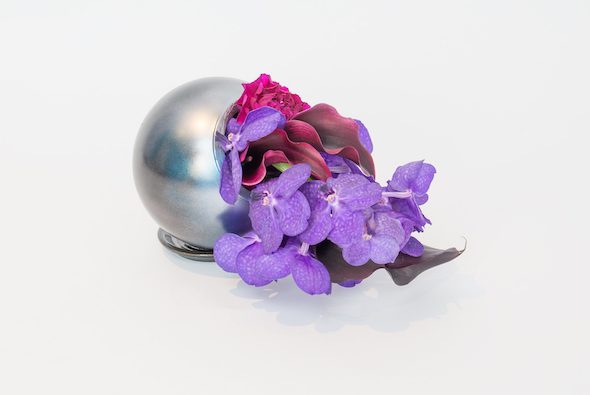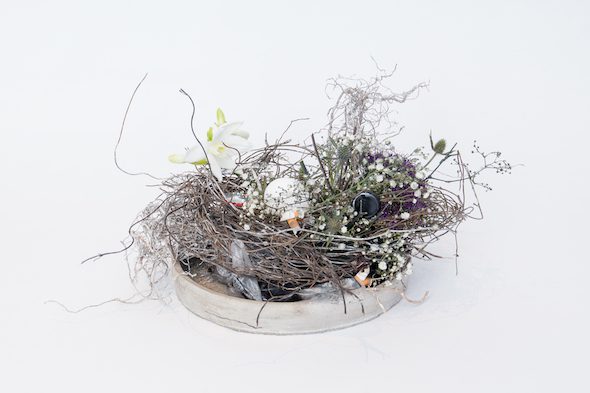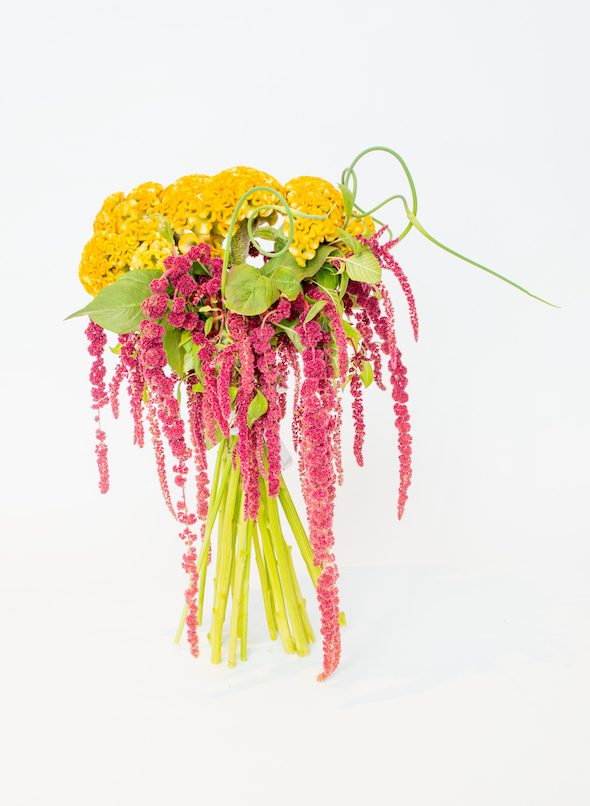International arts agency and creative studio Paloma Powers will be launching ‘Flora Powers’, a series of conceptual floral arrangements to coincide with the opening of the 9th Berlin Biennale. The five limited edition bouquets have been designed by artists Monira Al Qadiri, Asger Carlsen, Rachel de Joode, Sara Ludy and Amalia Ulman. Additional design and practical assistance was provided by Ché Zara Blomfeld, the founder of curatorial powerhouse The Composing Rooms, and floral engineers Aurime and Igne Aleksandraviciutes, the talented duo behind Lithuania-based Buketai.

Monira Al Qadiri: ‘Cosa Nostra’, 2016 // Photography by Alexander Coggins
‘Flora Powers’ was conceived as a means to explore the historical use of the giving, receiving and display of flowers as symbolic currency and ritual artefact. Flowers have played a significant role thorough history as tools to celebrate important events and communicate emotions, from ancient devotional offerings to the gods to contemporary Valentine’s Day bouquets. Arguably one of the earliest forms of decorative art, floral arrangements continue to be crafted using the language of flowers, with each bloom selected based on the symbolic characteristics or meaning which it has been attributed. The complex messages conveyed by floral arrangements and the historical content of their use has provided the ‘Flora Powers’ artists with fertile ground to reconfigure the language of flowers conceptually for contemporary art audiences.

Amalia Ulman: ‘The Humble Origins of Bob the Pigeon’, 2016 // Photography: Alexander Coggins
Limited edition ‘Flora Power’ bouquets can be pre-ordered online during the opening days of the 9th Berlin Biennale (June 2-4, 2016) and will be hand-delivered locally throughout Berlin by a network of couriers. While the bouquets have been conceived as portable mini-exhibitions, the delivery process itself can be understood as being both an exhibition platform and a performance. Viewed and selected through an intangible online portal, the delivery of the works allows the bouquets to blossom in the physical world immediately after ordering. This process acts as a performance of the matrix of e-commerce in contemporary society as well as the changing landscape of consumerism in the commercial arts industry.

Sara Ludy: ‘TNJ Bouquet’, 2016 // Photography: Alexander Coggins


























